Ghost pipe emerges ethereal from crackling autumn leaves. This snow-white flower is both coveted and controversial; a long-awaited autumn companion shrouded in mystery.
For a survivalist, it could be one of the most important medicinal plants you ever forage. Ghost pipe tincture is a powerful nervine, providing relief and relaxation for those affected by acute pain, panic, and anxiety.
Unfortunately, there’s a great deal of confusion and misinformation surrounding this spectral blossom. Read on to discover what the science says and learn how to make ghost pipe tincture with safety and ecological responsibility in mind.
What to Know Before Making Ghost Pipe Tincture
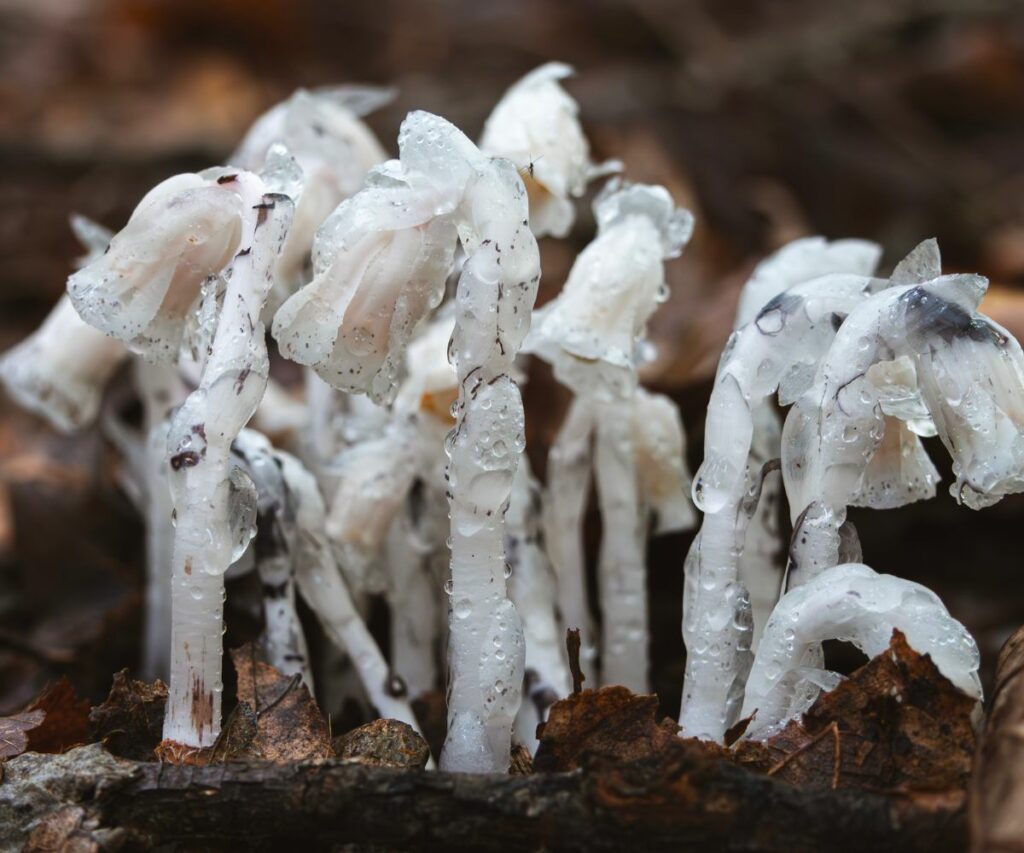
Ghost pipe is so controversial because of its delicate ecological status, a lack of research, and its possible toxicity.
Known in the scientific community as Monotropa uniflora, ghost pipe is a member of the Ericaceae family in the subfamily Monotropaceae. It is a relatively rare plant at risk for overharvesting in many areas. If you do decide to use it, please do so responsibly by following the directions outlined in step three.
Regarding toxicity, what we know comes mainly from a single study carried out in 1889. This study proved the presence of the neurotoxin grayanotoxin, which is present in many other Ericaceae species.
Ingesting too much of it can lead to a dangerous decrease in heart rate, among other adverse effects. It’s important to note that this study has never been replicated, and there are doubts about its quality compared to modern methodological standards.
Evidence of ghost pipe’s incredible efficacy in pain relief is anecdotal, though the plant does contain glycosides that act similarly to salicylic acid — the main component of aspirin. This is slightly disheartening, considering we already have a vast wealth of alternative salicin-producing plants and a variety of cheap OTC painkillers.
Ghost Pipe: All Hype?
Ghost pipe is greatly revered. Could there possibly be more to the story? Well, maybe. The very toxicity of ghost pipe might be precisely what elevates its pain-relieving properties far beyond mere aspirin. Certain grayanotoxins exhibit intense analgesic properties, some more powerful even than morphine. Whether ghost pipe produces these specific grayanotoxins is unknown, and further study is needed.
Another ounce of anecdotal evidence from yours truly: ghost pipe is a powerful pain reliever. It brings an intense feeling of calm, relaxation, and order to the mind. It is not psychoactive in the slightest and has no euphoric effects. But if drugstore aspirin isn’t available, ghost pipe will work wonders in a survival scenario.
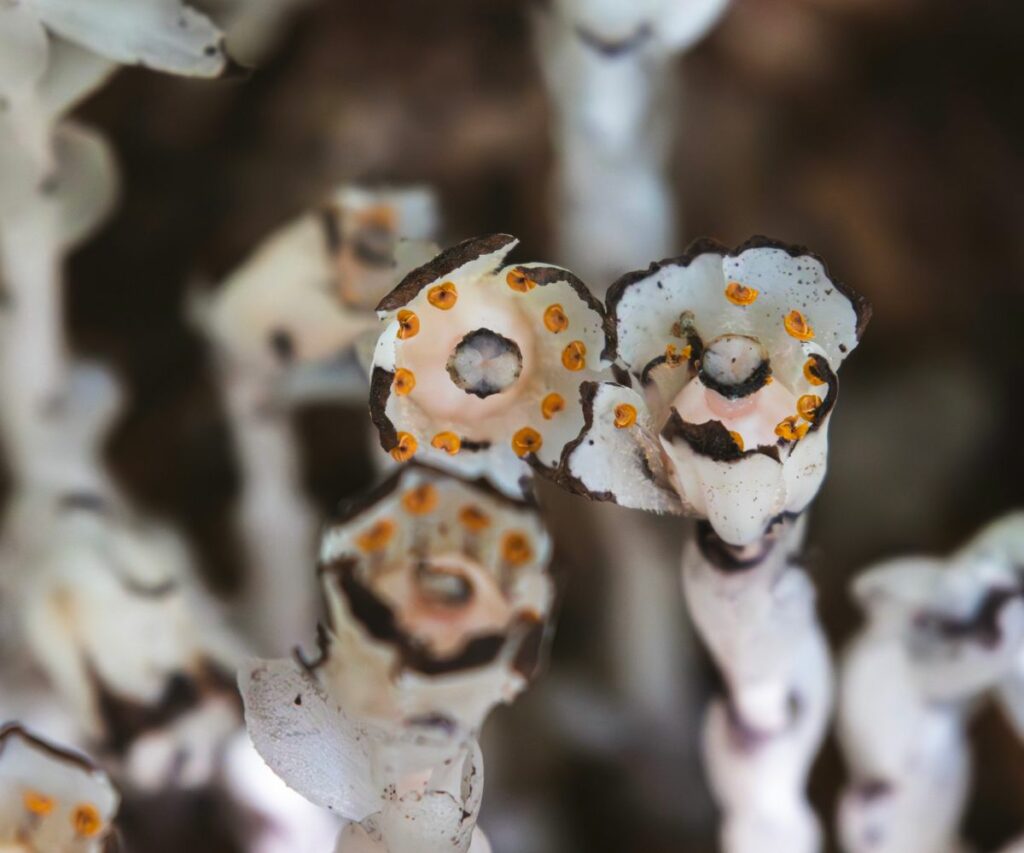
Materials You’ll Need to Make Ghost Pipe Tincture
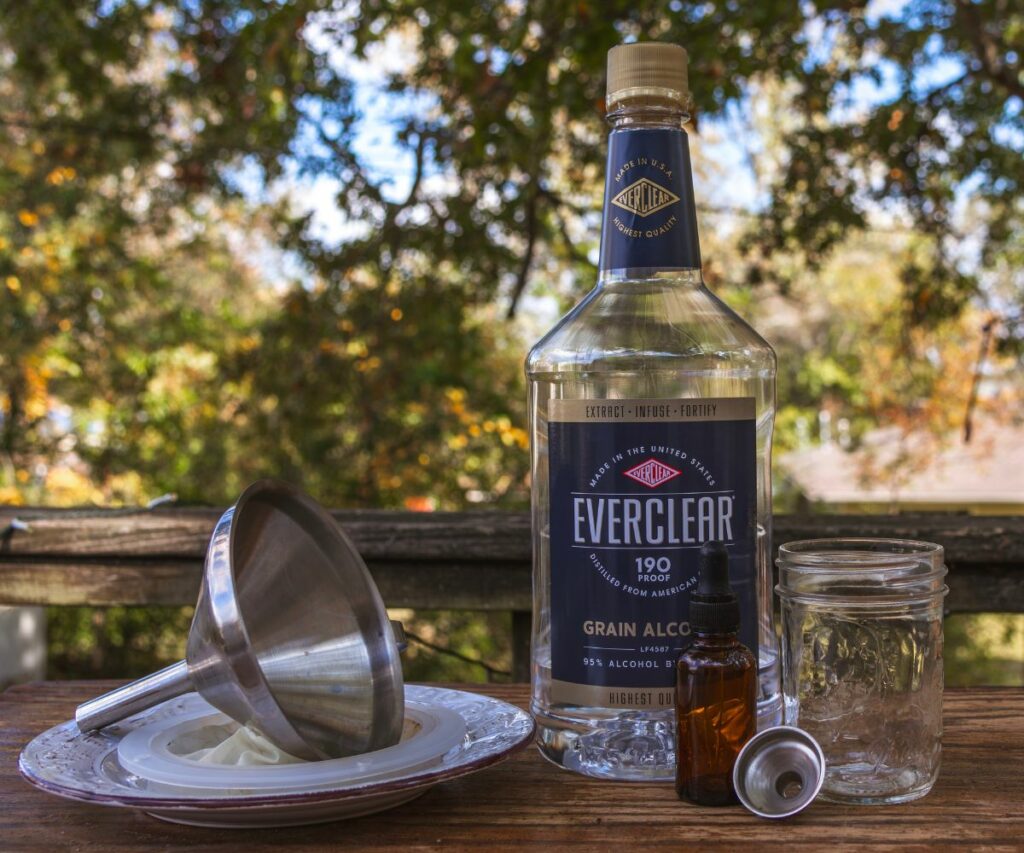
Ghost pipe tincture is relatively easy to make, though extracting the compounds takes a lot of hands-off time. Here’s what you’ll need to get started:
- Ghost pipe patch: Ghost pipe will serve as the medicinal base for your tincture. You will need to find a patch of it before you begin.
- Foraging knife: You’ll need a sharp knife to harvest ghost pipe responsibly.
- Alcohol: Use alcohol as a solvent to extract the medicinal compounds in ghost pipe. It’s not clear exactly what percentage of alcohol will work best here, but I always use 190-proof with excellent results.
- Mason jar: The mason jar will contain your mixture and keep it safe while tincturing.
- Strainer: The strainer will allow you to separate the spent plant material from the usable tincture. I sing the praises of my Toncoo strainer and highly recommend it for everyone, but a simple cheesecloth will do in a pinch.
- Amber tincture jars: It’s vital to store such rare and potent herbs correctly in amber glass. Darker colors like amber prevent degradation from UV rays over time, while glass holds up pretty well against high-proof alcohol.
How to Make Ghost Pipe Tincture
1. Source Your Ghost Pipe.
Ghost pipe blooms in early autumn from June to September. It lasts only a few days at prime, so anyone hoping to harvest must stay vigilant and not wait too long. The plant is easy to recognize, a beautiful yet somehow ghastly looking flower lacking chlorophyll or pigmentation.
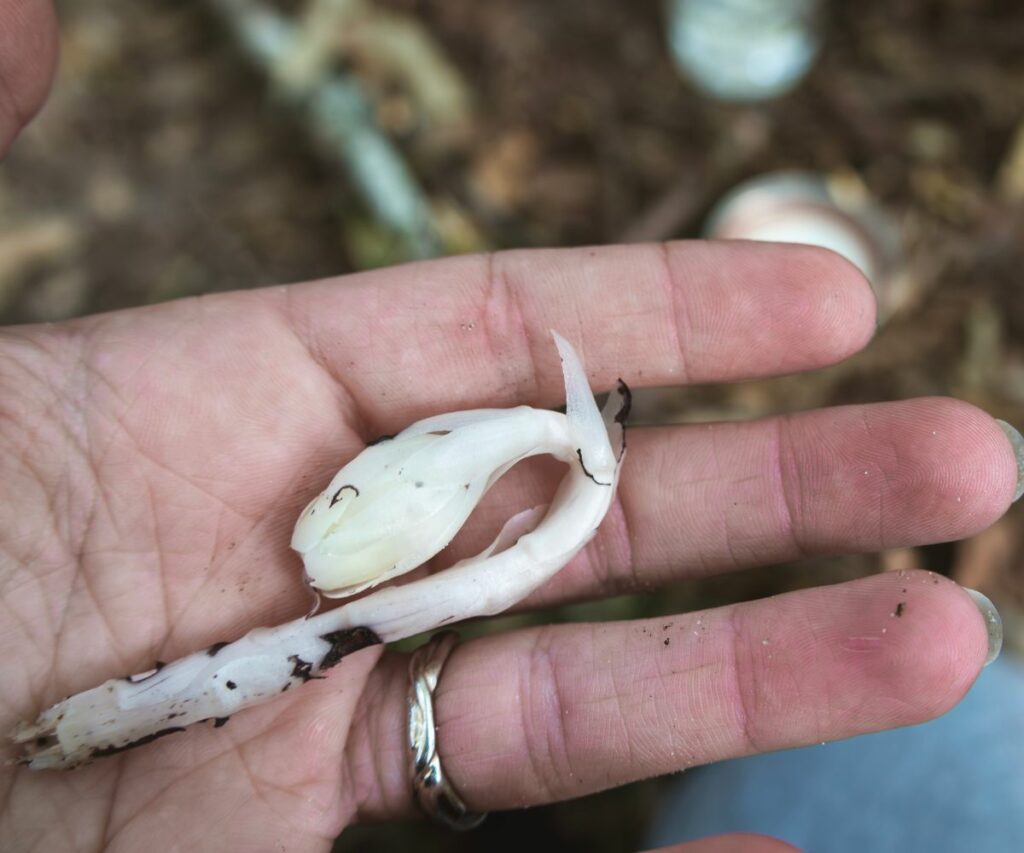
Also known as “corpse flower,” ghost pipe’s ghoulish skin is firm and somewhat translucent. It may take on a pink hue over time, with spots of black appearing as the flower ages.
You probably won’t mistake it for anything else, and you might not find it at all. Ghost pipe is rare and requires a perfect balance of specific conditions to grow. It is extremely difficult, if not impossible, to cultivate.
Why is that? Ghost pipe is a mycoheterotrophic flower. Instead of relying on photosynthesis, ghost pipe obtains nutrients from surrounding tree root systems. It parasitizes these trees through fungal mycorrhizae, favoring species of Russula.
This parasitic ménage à trois can benefit you since the trees and mushrooms indicate where you’ll find the flower. Ghost pipe prefers old-growth oak or pine forest bottoms that are much too dark for regular flowers. It populates long-undisturbed places rather than trails more traveled.
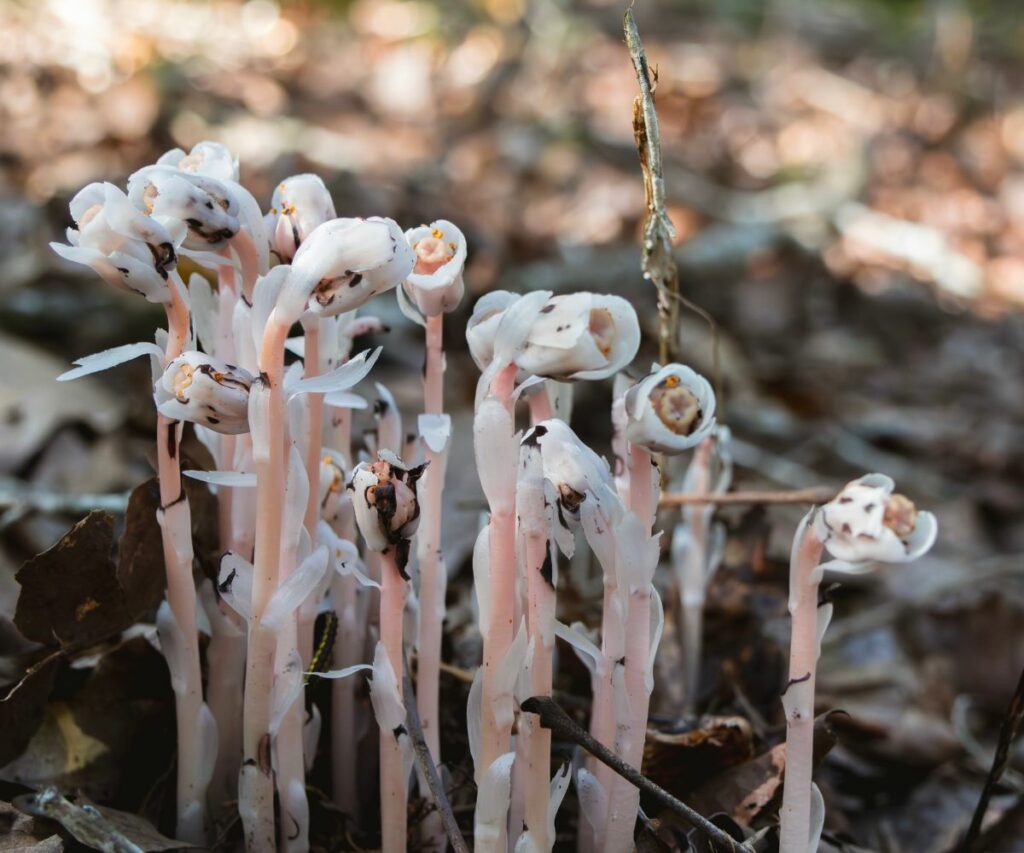
2. Prepare Materials at Home.
Once you’ve located a patch of ghost pipe, you’ll want to prepare a mason jar with alcohol at home and bring it into the field. While other plants, like purple dead nettle, can be dried and stored before tincturing, ghost pipe begs for special treatment. It’s best practice to put the pipes into the alcohol immediately after harvesting them.
Lugging a bunch of Everclear out into the forest isn’t exactly convenient. Considering I couldn’t find any scientific basis for this practice, it might not be entirely necessary. However, it is traditional folk practice and the standard method many modern herbalists employ.
So, what are your ratios here? Again, with little scientific research on ghost pipe, giving an accurate picture of medicinal strength by ratio is impossible. I have played around with different proportions and discovered that two flowers per ounce of alcohol works for my needs.
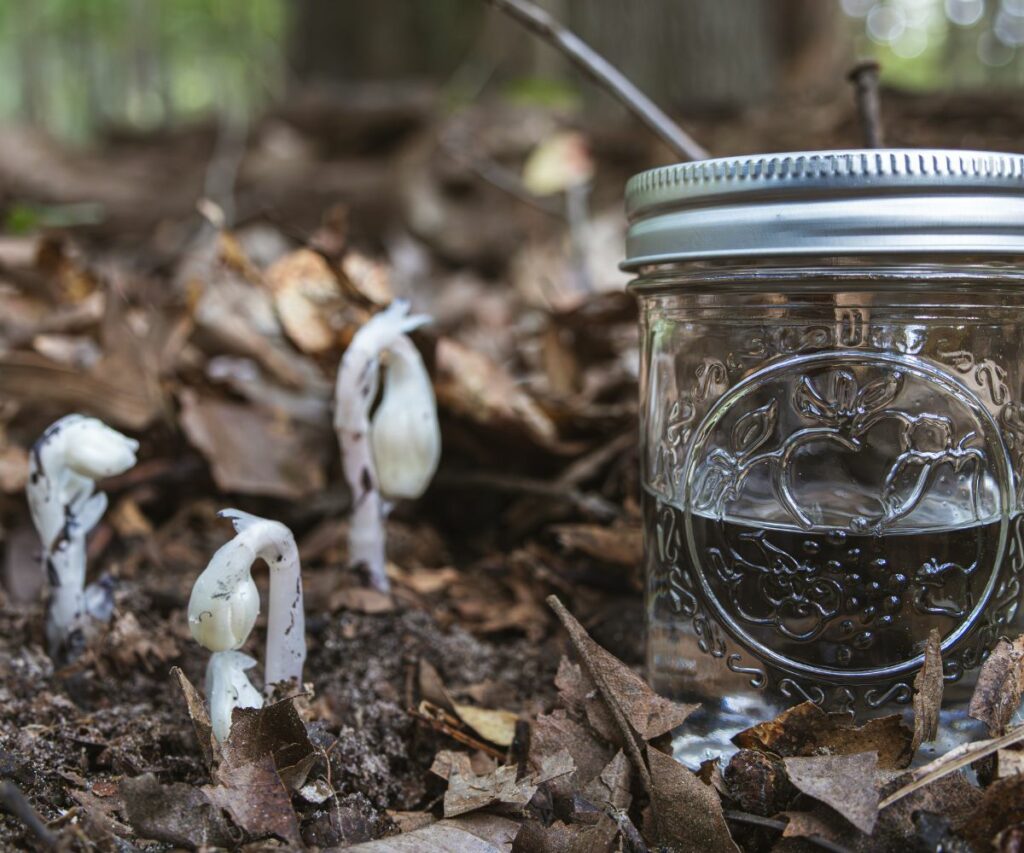
3. Harvest Ghost Pipe the Right Way.
Ghost pipe’s ecological status is tenuous. Because of overharvesting, many herbalists discourage its use entirely. While it isn’t categorized as endangered or threatened on the National Fish and Wildlife registry, several states classify it as imperiled or vulnerable to imperilment.
If you live in an area where ghost pipe is under threat, do not harvest it unless SHTF and you have no other option.
You must take the right plant at the right time to make effective medicine responsibly. Here are some basic practices to keep in mind while you harvest:
- Never harvest a single ghost pipe growing by itself. Only harvest from patches containing a substantial number of flowers.
- Do not pull up the roots. Ghost pipe is a perennial and will grow back next year if its needs are met, but not if you take the root. While some sources indicate roots make more potent medicine, others claim aerial parts are just as effective. In my own experience, the aerial parts are powerful enough.
- Make sure you take plants that bend over like candy canes rather than those that stand straight up. It’s rumored that the flower loses medicinal potency once it straightens out and disperses its seeds.
Harvest two flower heads with stems for every ounce of alcohol. Cut healthy, sizeable specimens as close to the ground as possible without damaging the root. Once cut, brush off any remaining dirt and place the plants in the alcohol. If desired, you can cut them into chunks beforehand.
In a few moments, the tincture will begin to turn purple.
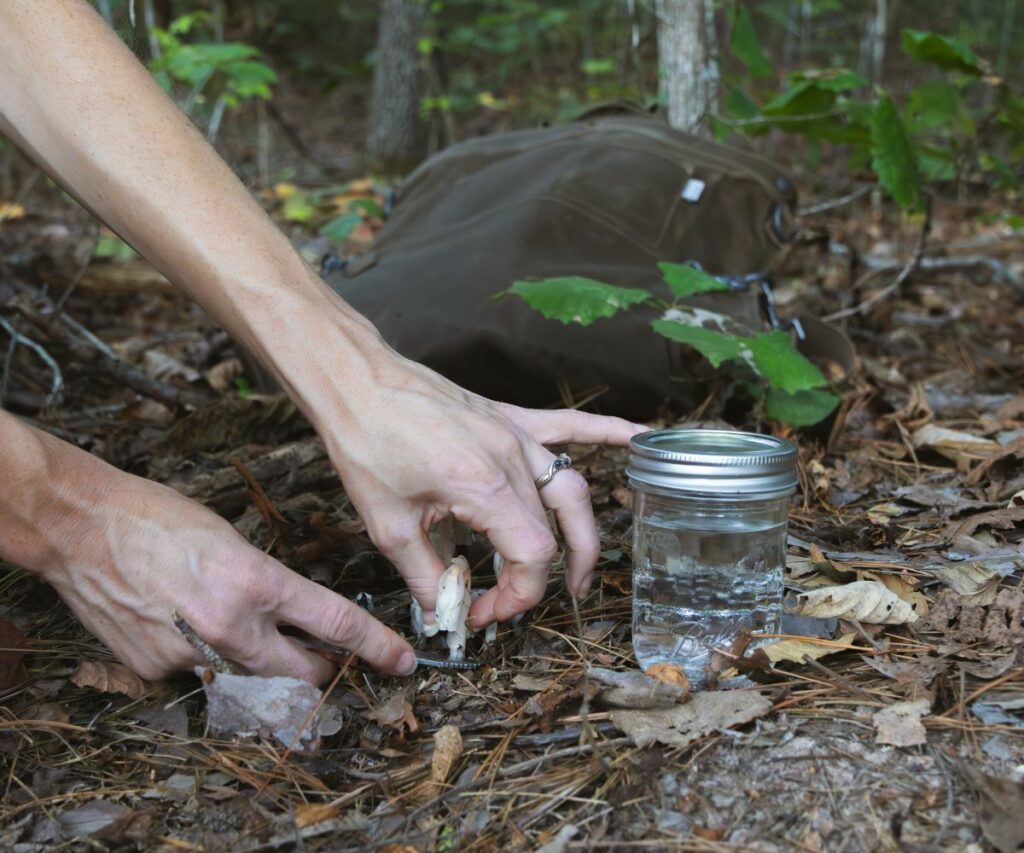
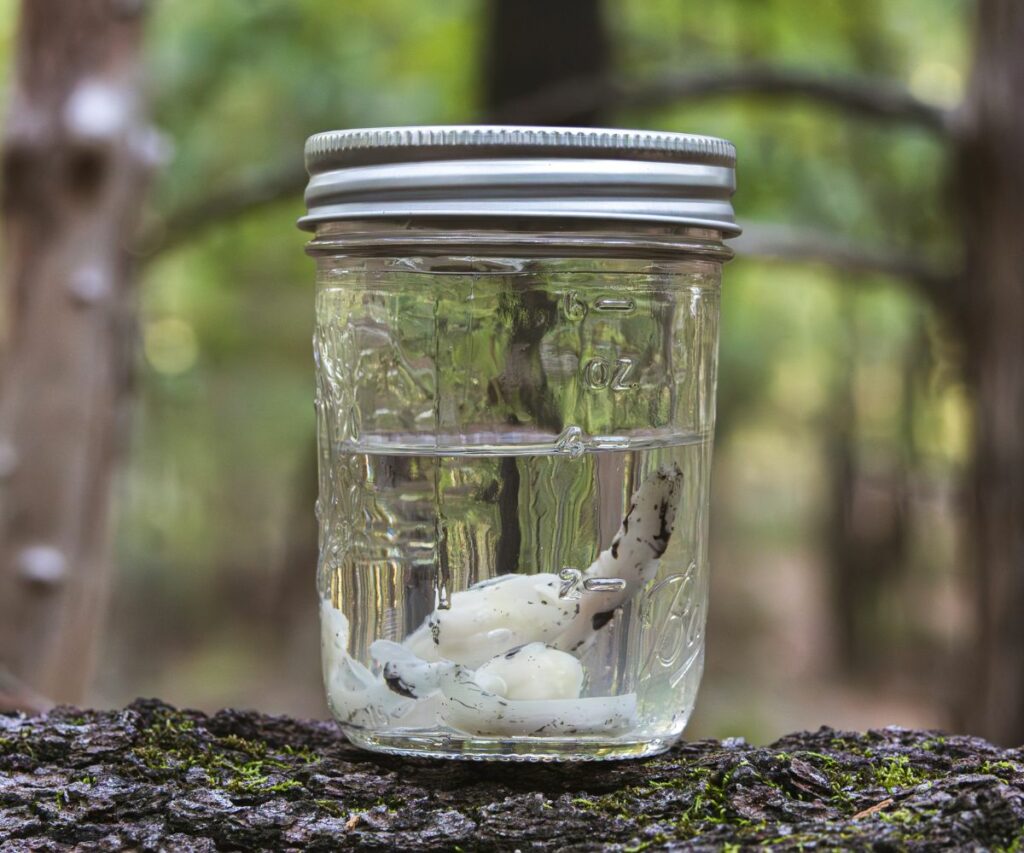
4. Leave for Extraction.
Return to your home and place the tincture in a cool, dark place for four to six weeks. It won’t go rancid if you leave it for more time, but nothing suggests it will be more effective the longer you leave it.
Remove it once every day and shake it around a bit so fresh alcohol reaches the plant material and has a chance to extract compounds. The tincture’s lavender tint will darken more substantially into a rich, deep, purplish black as time passes.
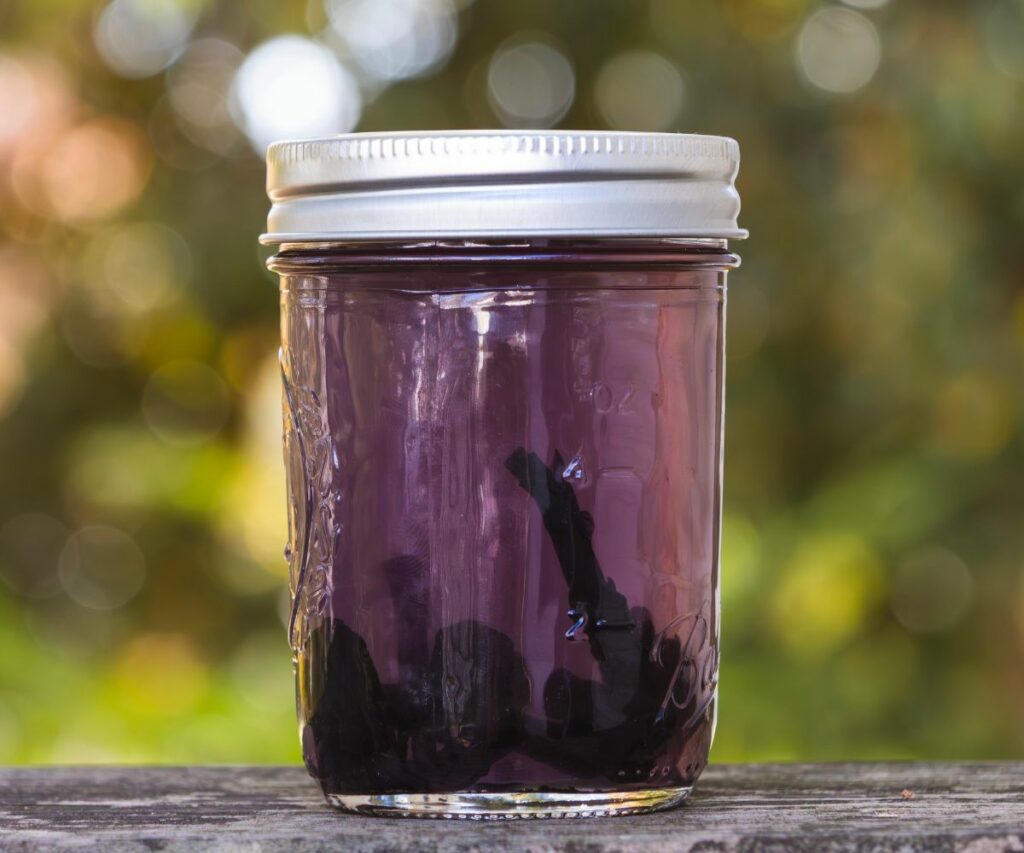
5. Strain Plant Material.
After four to six weeks, break out the ghost pipe tincture and strain it through a cheesecloth or dedicated small-particle strainer. Press the macerated plant material to get out as much alcohol as you can. The leftover plants will be blackish in color. You can compost or dry them and use them for arts and crafts.
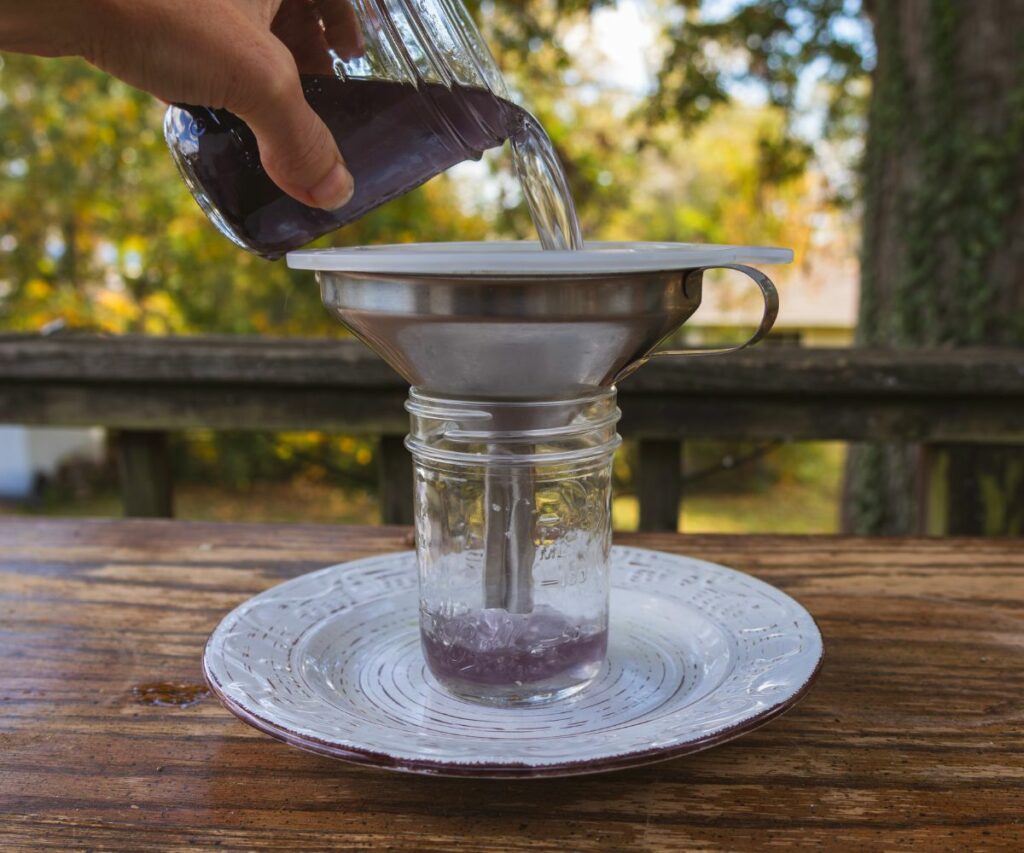
6. Bottle in Amber.
Properly storing your ghost pipe tincture ensures a long and fruitful shelf life. Carefully pour the mixture into the amber tincture bottles using a funnel to prevent wasting any medicine. Then label it and put the tincture in a cool, dark place until needed.
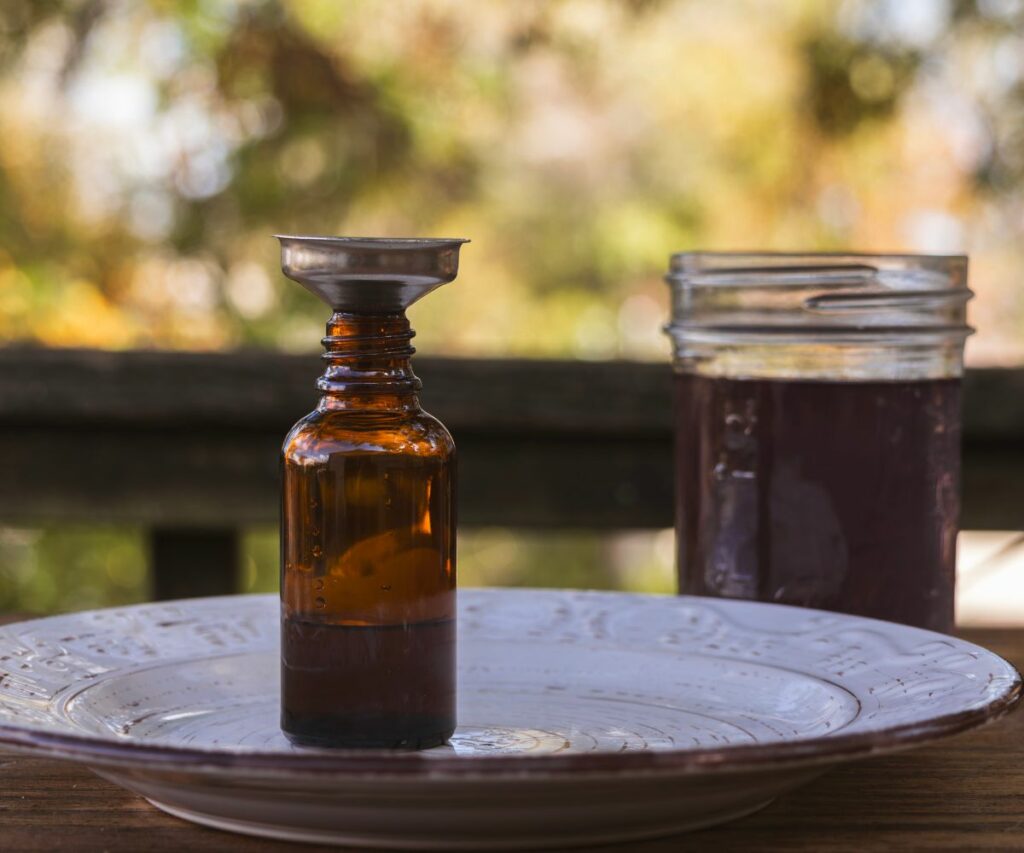
7. Use Responsibly.
So, when should you take ghost pipe tincture, and how much should you use? Unfortunately, there isn’t a clear-cut answer to this question. Ghost pipe is a rare, understudied plant with potential toxicity. This is not an everyday tincture and it’s best to consult an herbalist or specialized medicine practitioner before using it.
Do not use ghost pipe if you are pregnant, breastfeeding, have any heart issues, or take any other prescription drugs. You just don’t know how this plant will interact. Don’t use it for minor aches and pains, generalized muscle soreness, or just to wind down at the end of the day.
Instead, use it for circumstances that warrant more extreme intervention and save it for when you cannot access anything else. Here are a few instances where ghost pipe would be appropriate:
- Broken bones
- Severe migraines
- Major physical trauma
- Psychotic episodes
- Severe panic attacks
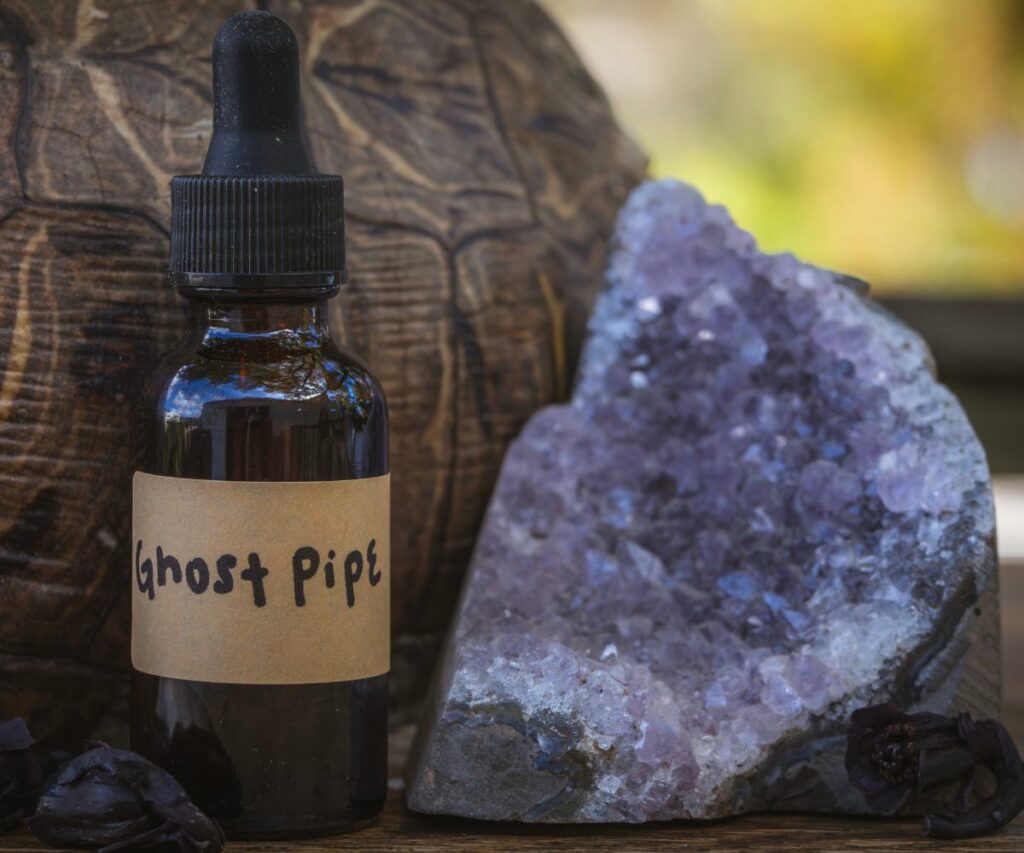
Many herbalists recommend starting with three drops, increasing the dosage depending on response, and waiting 5–20 minutes between doses. I usually take four to six drops for severe pain, though your tolerance will almost certainly differ. To be safe, start with a single drop to three drops and work your way up to gauge your unique reaction to this medicine.
Now that you know how to make and use ghost pipe tincture responsibly, you can keep an eye out for this plant when it pops up next year. Remember to respect the delicate status of this ethereal herb and use it sparingly so that you and others can continue to enjoy it for years to come.


Written 1/15/25
I harvested about 7lbs of GP this past summer. My land in New York has it all over the place at different times. Over the three years I’ve been collecting it, I can state that there is no “GP season” so to speak. An area can produce it once conditions are right. I have varied landscape and each area will produce them for about 3 weeks. I have been making tincture using 80 proof gin and I literally pack the 750ML gin bottles. I generally take 2 to 4 droppers when I’m in pain and the relief is wonderful. I find it only lasts for about an hour though, never longer. I also find it almost impossible to overharvest, yet you still can of course. What I mean by that is no matter what I find and harvest, I always find an abundance when I look under debris on the forest floor. (I ignore those which I purposely left standing).
Are we sure it’s not the Everclear alleviating the pain. 🙂 I was going to purchase some for my brother He has arthritis in his back, but he is a recovering alcoholic. So he would not be able to take this.
Hi Mary,
Some online sellers make glycerites with Ghost Pipe – these are tinctures that use glycerin instead of alcohol to extract compounds. These should be safe for your brother, but it is unclear how functional they are. We simply don’t have the research, all we can go off is anecdotal evidence.
I live in Massachusetts and have found a. Lot of these plants, about 5 weeks ago I did make a tincture and haven’t strained it yet will soon. I didn’t know that 2 flowers were enough for every ounce thank you, I stuffed the pint very much fo you think it might be too strong. They are growing a lot more and will be making more this time I will only put 2 to every ounce thanks again for all your knowledge.
Hi Linda, if the tincture you’ve made is indeed too strong, you can dilute with alcohol or water. I’d try a single drop first before diluting, though. Let us know how it goes!
I would be interested in purchasing some if possible. This is very useful to me
I just started my Ghost Pipe experiment, and I used 80 proof vodka. I did a batch with minced up GP (Ghost Pipe) and within 12 hours the minced up batch was a deep purple, I didn’t see that happen instantly. But they say if you’re doing it correctly, that the color in the end is a deep purple. Another GP enthusiast recommended that your batch be 50% GP in relation to the amount of alcohol. I guess if it’s too potent at the end, you can dilute it down with more alcohol. That would also determine how many drops work best for each person. Is the shelf life about 2-3 years for effectivness?
Thank you for all of your information, very helpful.
Hi Marika, the color is usually purple, but I’ve seen batches that are lighter as well. In my experience, lighter batches are still effective. The tincture loses its potency over time, but the general consensus is that it should remain potent 3-5 years. Anecdotally, I’ve seen it last much longer.
How tall should the stalks be to harvest? Also made some 15 minutes ago but no change in coloring of the alchohol. Wondering if i harvested to early. Would love to know what you think.
Hi Janine,
The color is usually purple, but I’ve seen batches that are lighter as well. In my experience, lighter batches are still effective. It may be that earlier in the season they just don’t imbue the alcohol with that deep purple color. In fact, I have a batch right now that refuses to darken! Please do leave another comment when you try your batch – I’d love to know if it worked.
Can you tell me, in the 1889 study that found the presence of grayanotoxin in ghost pipe plant, and the subsequent comment that ingesting too much can cause a dangerous decrease in heart rate, how much is too much? Do you mean even a relatively low amount every day for a year? Do you mean a large one time dose? And what would a low or large dose be?
I looked at the study but do not understand it.
Hi Renee,
There are numerous types of grayanotoxins and since we don’t know exactly which one is present in GP (or even if it IS present, since the research is so old), we cannot say exactly the maximum safe dose for anyone. I don’t recommend anyone take the tincture daily, but I know people who do without ill effects.
Forgot one ? I understand you don’t sell it but do you recommend any companies that harvest responsibility and have a good, made my nature Ghost Pipe? Thanks again
Hi Angie,
Sorry it’s so late! Look here: https://www.foraged.com/products/ghost-pipe-tincture-2
The listing should be available in 4 weeks once my current batch is cured.
My therapist recommended I try this for anxiety, I am a bit cautious. I am sensitive to OTC medicine. Maybe because it’s loaded chemicals how long does one drop last? Or do you know how long the benefit lasts? TIA
Angie – I take 3 drops, and it works for about four hours.
Do you make these for sale? Would like to try it before I attempt to make it myself
Sorry, we only have them for personal use.
Most informative article on ghost pipe I’ve read. I truly believe in tinctures, looking forward to trying this.
Thank you! Please let us know how it goes.
I take other presciptions so couldn’t try this-but if it helps you, I think it’s awesome that you know how to make it and are sharing the knowledge with others.